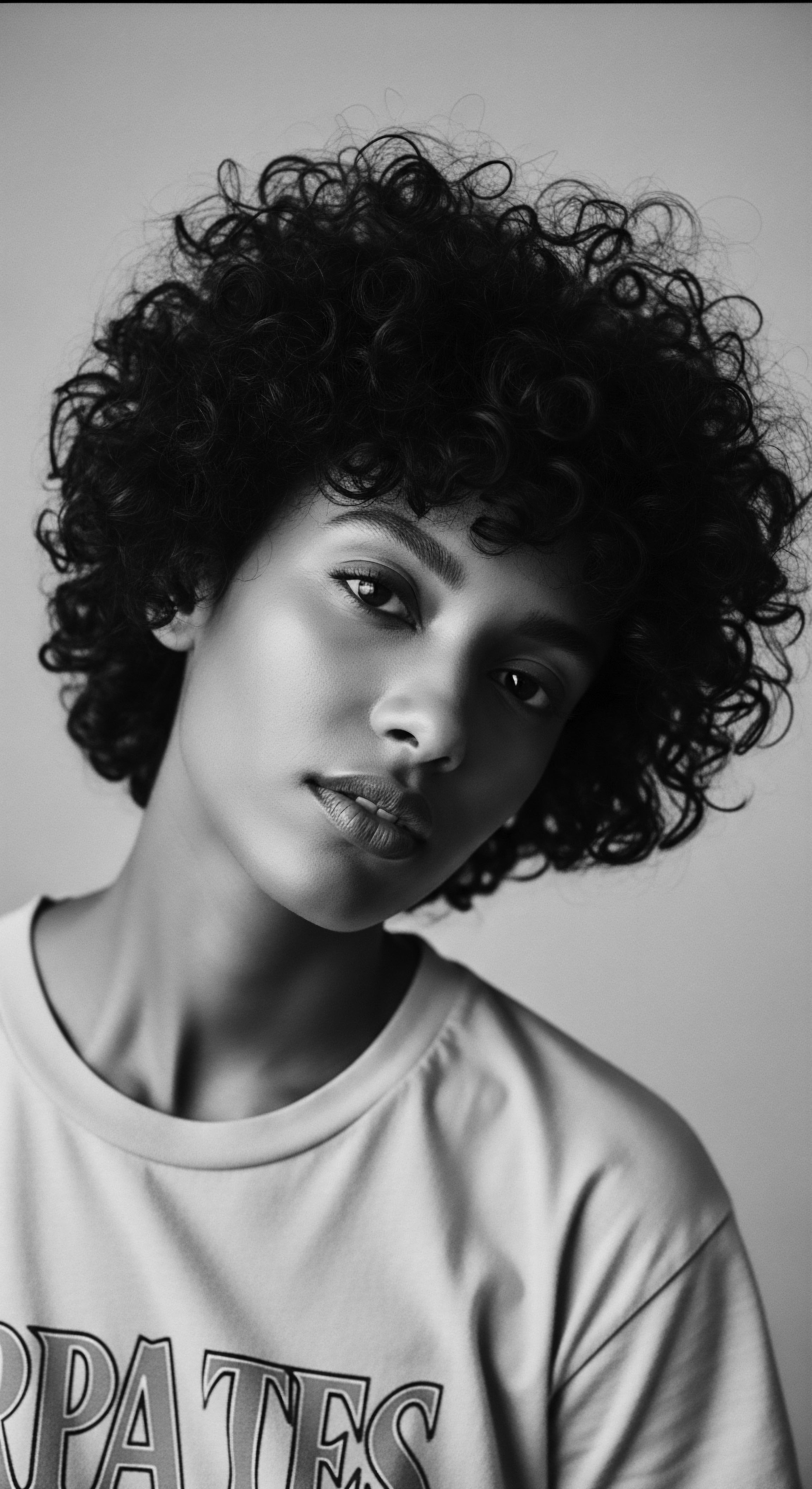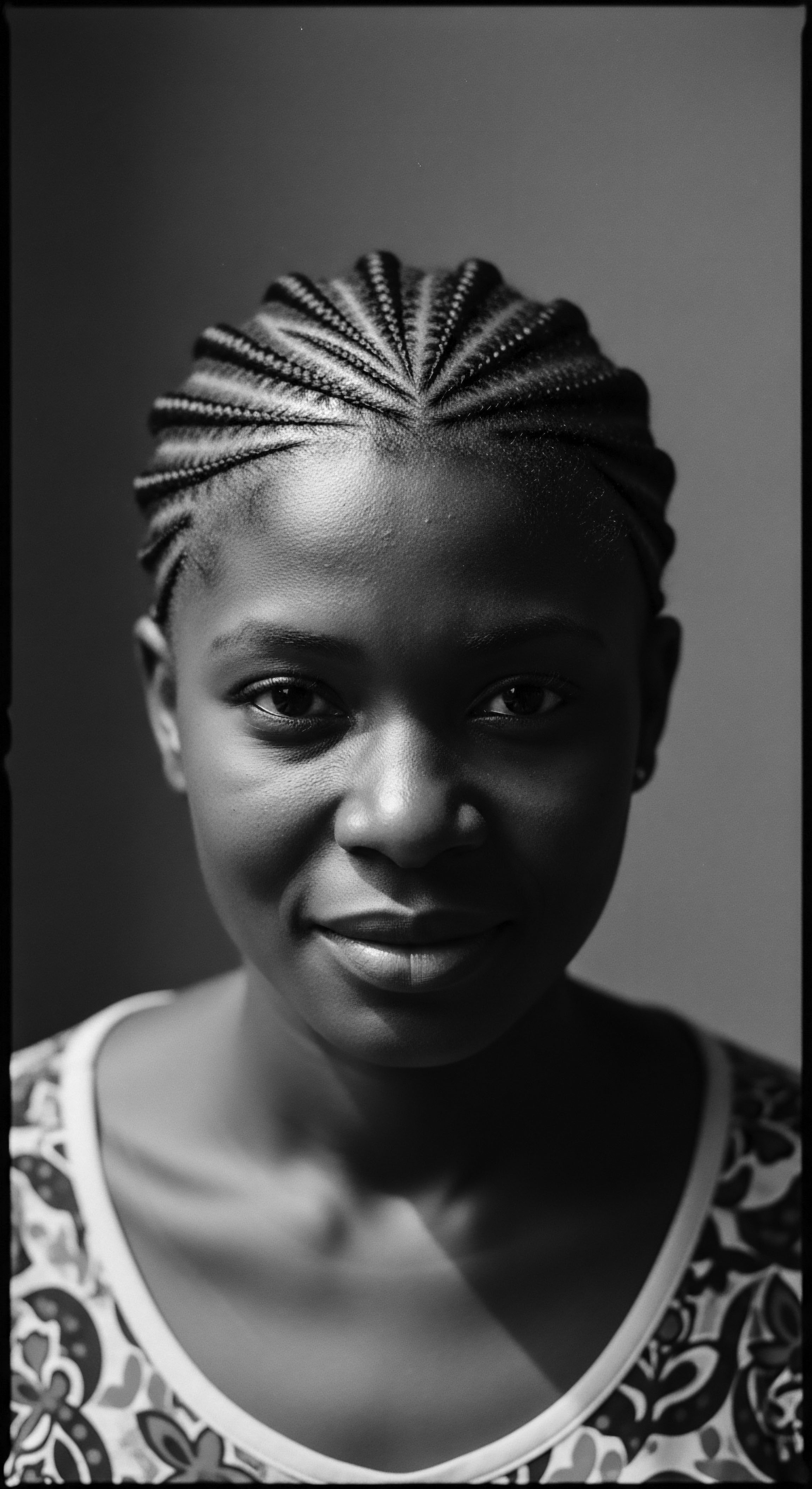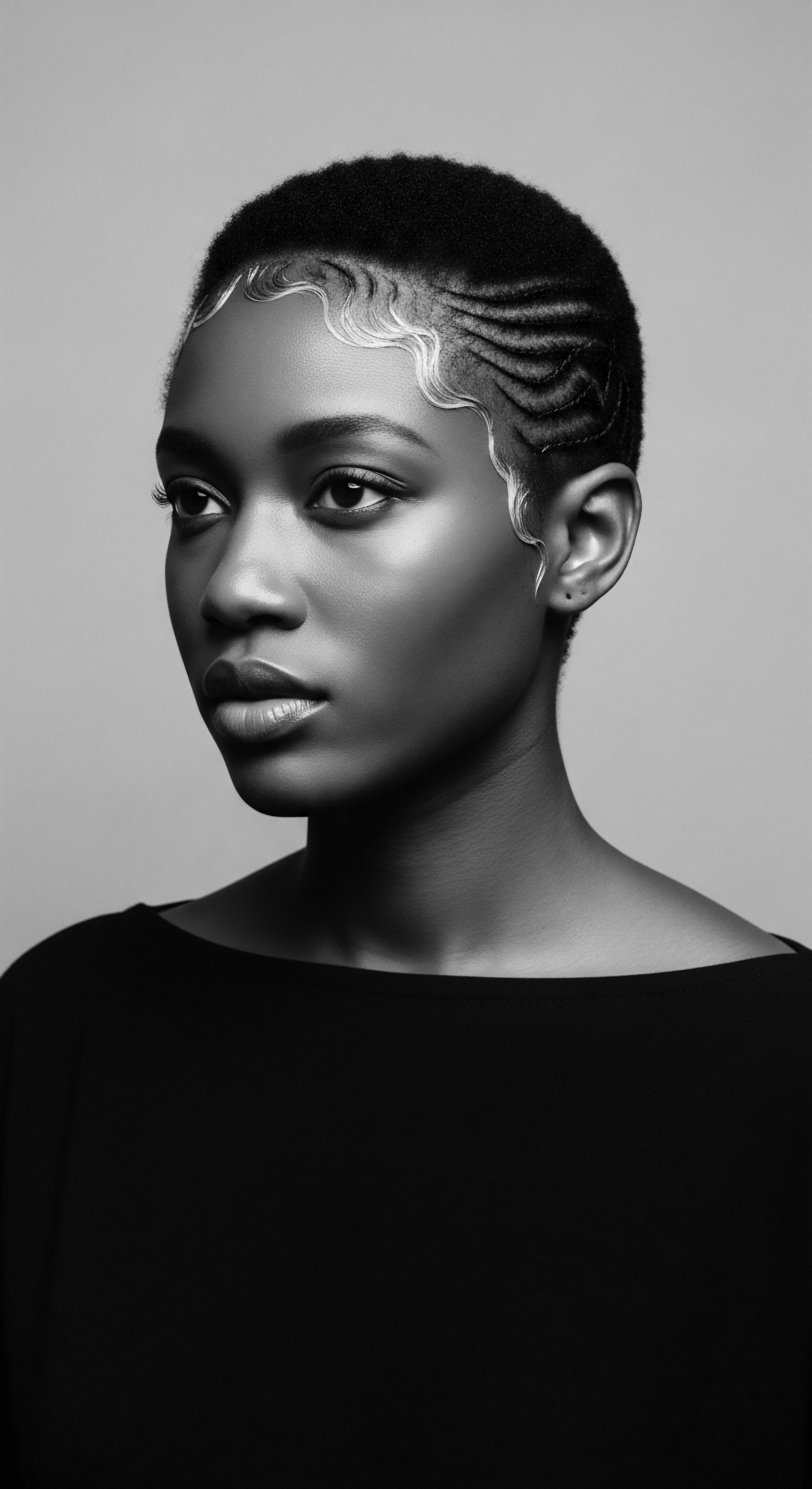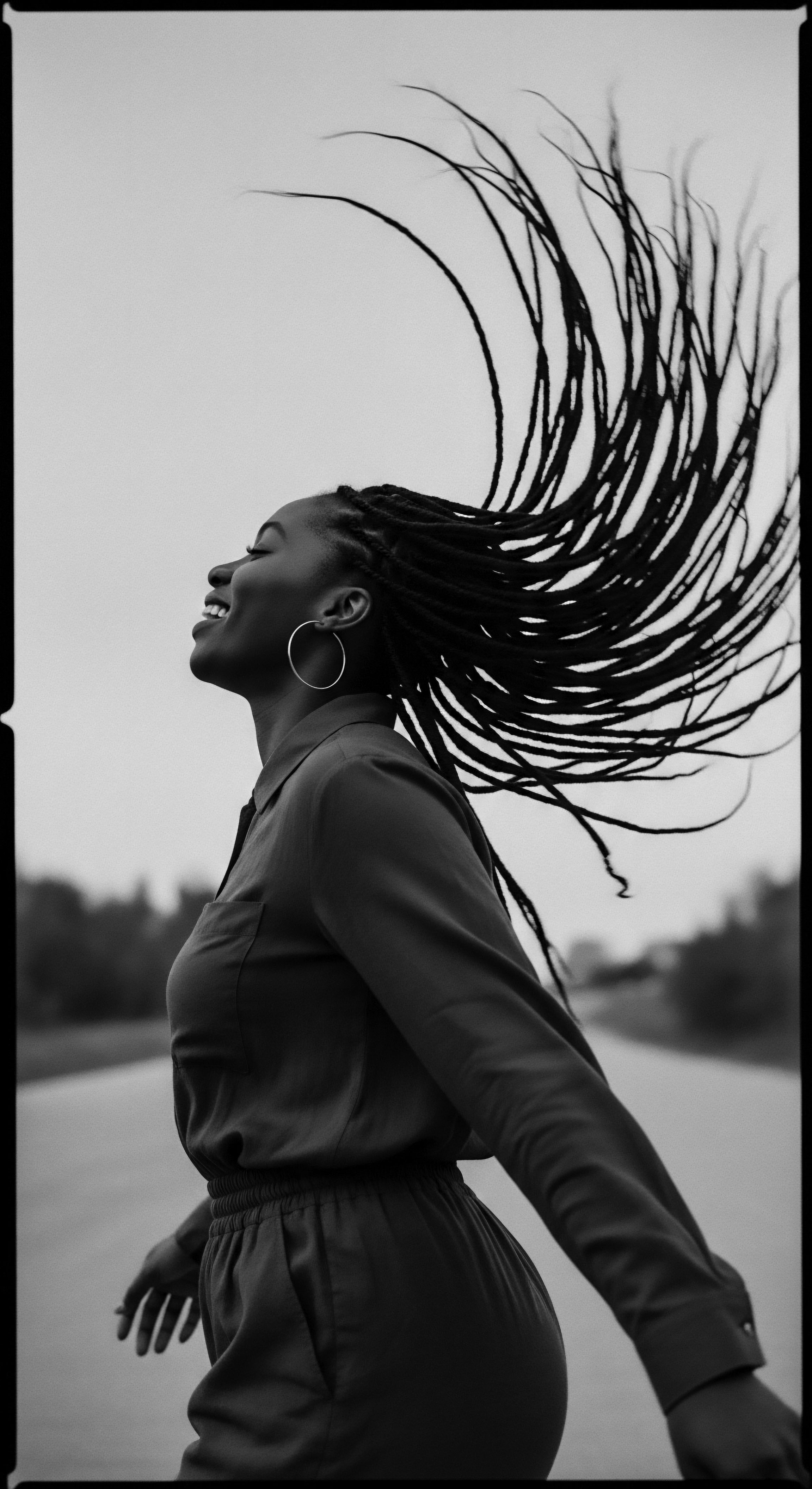
Roots
Our hair, coiled or curled, braided or loc’d, carries within its very structure a silent story. It is a biological archive, a living testament to a heritage that stretches back through time, across continents, and through trials. When we consider the history of textured hair care, we are not merely recounting a timeline of styles or products. We are tracing the indelible marks left by historical events on the deeply ingrained traditions, spiritual beliefs, and communal bonds woven into the fabric of African hair heritage.
Each strand holds ancestral echoes, speaking of ingenuity, resilience, and identity. This journey into the past reveals how events, both grand and insidious, shaped how Black and mixed-race people have related to their hair, transforming it from a symbol of status to a site of resistance, and back again.

Ancestral Understanding of Textured Hair
Before the shadows of distant ships touched African shores, hair on the continent was a vibrant, expressive canvas. It was more than a mere biological feature; hair was a central component of social, spiritual, and personal identity. Different styles served as a visual language, communicating a person’s age, marital status, tribal affiliation, wealth, and social standing.
For instance, among the Yoruba people of Nigeria, intricate hairstyles conveyed community roles. The Himba tribe in Namibia still adorns their loc’d styles with red ochre paste, a gesture that represents their connection to the earth and their ancestors.
The head, as the body’s highest point, was often revered as a portal for spiritual energy and a connection to the divine. Hair care rituals were communal, intimate activities where knowledge was shared and bonds strengthened across generations. This collective approach to grooming reinforced familial and community ties, turning the act of styling hair into a meaningful social ritual. This profound reverence meant that hair was often considered sacred, protecting against malevolent forces when adorned with amulets and charms.
Hair in ancient African societies functioned as a living lexicon, communicating identity, status, and spiritual beliefs through its diverse styles.

Anatomy and Classification of Textured Hair
From a scientific view, textured hair, often termed afro-textured or kinky hair, exhibits a distinct helical structure. Each strand grows in a repeating pattern of small, contiguous kinks, resulting in tight twists and sharp folds. This unique structure leads to a denser appearance compared to straight or wavy hair.
The evolutionary product of this hair type is believed to be an adaptive need among African ancestors, offering protection from intense ultraviolet radiation from the sun. Understanding this biological foundation is essential, as it highlights the inherent strengths and unique needs of textured hair, often validated by modern science mirroring ancestral practices.
Historically, terms like “woolly” or “kinky” were used to describe afro-textured hair. In 1825, Jean Baptiste Bory de Saint-Vincent introduced the scientific term Oulotrichi for human taxonomy. More recently, systems like Andre Walker’s hair typing system emerged, classifying hair into types with ‘type 4’ representing kinky hair. These classification attempts, while modern, speak to a long-standing human desire to categorize and understand hair’s diverse forms, though their cultural and historical origins sometimes carry biases reflecting a Eurocentric lens.

Traditional Hair Care Ingredients and Tools
Ancestral hair care practices relied on a rich pharmacopoeia of natural ingredients, passed down through the generations. These remedies were not simply cosmetic; they were deeply integrated with holistic wellbeing and connection to the land.
- Shea Butter ❉ Extracted from the nuts of the shea tree, this rich emollient was a cornerstone of moisturization and protection for hair and skin across West Africa.
- Coconut Oil ❉ Widely used in coastal African regions, coconut oil served as a sealant and conditioner, known for its nourishing properties.
- Aloe Vera ❉ Valued for its soothing and healing qualities, aloe vera was used for scalp health and to promote hair vitality.
- Chebe Powder ❉ Originating from Chad, this traditional mixture of Chebe seeds, cherry seeds, and cloves is used to moisturize hair and reduce breakage, promoting growth. The ritual of applying Chebe has been passed down for generations.
Tools of care were equally ingenious, crafted from readily available resources. Combs and picks, often carved from wood, bone, or metal, were not just functional but also works of art, sometimes carrying symbolic designs that identified tribal or personal affiliations. These tools were extensions of the sacred art of hairstyling, facilitating the intricate braids and sculptured forms that characterized pre-colonial African hair artistry.

Ritual
The flow of history, like the intricate patterns of a braided style, reveals moments of profound transformation in African hair care heritage. The Transatlantic Slave Trade, followed by the insidious reach of colonialism, delivered a devastating blow to these ancient traditions, yet paradoxically, also forged new paths of resilience and resistance. Hair became a silent language of survival, a repository for memory, and a defiant symbol against the erasure of identity.

The Middle Passage and Erasure
The advent of the Transatlantic Slave Trade in the 15th century represents a cataclysmic rupture in African hair care heritage. Upon capture and transport to the Americas, one of the first dehumanizing acts inflicted upon enslaved Africans was the forced shaving of their heads. This act, often rationalized as a measure against bacteria on slave ships, served a far more sinister purpose ❉ to humiliate, strip identity, and sever ties with cultural heritage and homeland. As Ayana Byrd and Lori Tharps note in their work, this act of shaving was the initial step in a systemic process of cultural and identity erasure.
Separated from their communities, ancestral knowledge, and traditional tools, enslaved Africans faced immense challenges maintaining their hair. The harsh conditions of plantation life, coupled with the deliberate denial of hair care essentials, made traditional grooming practices nearly impossible. Kerosene, bacon grease, and butter were sometimes used as makeshift alternatives for care, yet these were neither efficient nor truly nurturing for textured hair.

Hair as Resistance and Communication
Despite relentless oppression, the inherent meaning of hair could not be extinguished. Enslaved Africans, with remarkable ingenuity, transformed their hair into a tool of covert communication and resistance. Cornrows, in particular, became a powerful medium.
These tightly braided patterns, an ancient African style dating back to 3000 BCE, served to encode messages, maps, and escape routes to freedom. In regions like Colombia, cornrow patterns were used to create actual maps and directions for those planning escapes.
A powerful historical example of this coded communication comes from enslaved rice farmers, particularly women, who would braid rice seeds into their hair as a means of survival during the Middle Passage and beyond. These concealed seeds, carried from their homeland, provided a vital source of food and a tangible link to their African agricultural heritage upon escape. This extraordinary practice illustrates how hair, even under extreme duress, remained a vessel for cultural memory, survival, and defiance against forced assimilation.
The practice of braiding rice seeds into cornrows exemplifies how textured hair became a secret keeper and a means of survival for enslaved Africans.
This period also witnessed the emergence of head wraps, or ‘doeks’ in Southern Africa, which became widespread among African diaspora populations. While some early accounts did not frequently mention head coverings for women in Africa, their uniform adoption across the Americas suggests head-wrapping was already entrenched in West Africa before or during the slave trade. These wraps, tied in specific ways, could signal social status or even relationship status, echoing practices from the continent. Head wraps protected hair from the elements, preserved moisture, and served as a powerful statement of cultural continuity and resistance against Eurocentric beauty standards.
| Era Pre-Colonial Africa |
| Hair Function/Meaning Indicator of age, marital status, wealth, social rank, tribal identity, spiritual connection. Hairstyling as a communal bonding activity. |
| Impact of Historical Event Societies created complex visual languages through hair, celebrating diverse textures and styles. |
| Era Transatlantic Slave Trade |
| Hair Function/Meaning Forced shaving as dehumanization, resistance via coded communication (maps, seeds), symbol of defiance. |
| Impact of Historical Event Systematic attempts at cultural erasure, yet hair transforms into an instrument of survival and covert heritage preservation. |
| Era Hair’s significance shifted from communal expression to a symbol of resilient identity and coded communication in the face of immense adversity. |

Colonialism and the Push for Assimilation
The legacy of the slave trade continued through colonialism, extending the discrimination against African hair textures. European colonists, with their self-proclaimed ‘civilizing mission’, classified afro-textured hair as closer to animal fur or wool, using this fabricated distinction to justify dehumanization and exploitation. This classification served to degrade natural hair and perpetuate a hierarchy where Eurocentric beauty standards reigned supreme.
Missionary schools, for instance, sometimes mandated shaving of African children’s hair, a practice that ingrained negative perceptions and punishments for not conforming. This period saw a deliberate push to replace indigenous hair practices with styles and products that mimicked European textures, often through harsh chemical processes.

Relay
The echoes of history reverberate through the ongoing story of textured hair care, shaping contemporary practices, beauty standards, and the powerful movements towards reclaiming ancestral wisdom. The journey from the Great Migration to the modern natural hair movement reveals a dynamic interplay of oppression, entrepreneurial spirit, and a deep-seated longing for authentic self-expression rooted in heritage.

The Great Migration and Shifting Standards
The early 20th century witnessed a significant internal migration within the United States, as millions of African Americans moved from the rural South to Northern and Midwestern industrial cities – an event known as the Great Migration. This demographic shift brought new pressures and aspirations concerning hair. As African Americans sought opportunities and a new life away from the immediate shadow of overt Southern racism, there was a societal push, and sometimes an internalized desire, to assimilate into mainstream American society.
Media portrayal of traditional African styles like braids and cornrows during this era often associated them with poverty and rural living. For many Black women entering domestic work, there was a perceived need to adopt straightened hairstyles for acceptance and to appear more “sophisticated”. This era saw the rise of hair straightening practices, using hot combs and chemical relaxers, as a way to conform to what was considered desirable. While scholars debate whether this was solely conformity to Eurocentric standards or also an exploration of new fashions, the pervasive message was that “good” hair was straight, often associated with European aesthetics.

Who Pioneered Modern Black Hair Care Industries?
Amidst these shifting beauty ideals, pioneering Black entrepreneurs emerged, creating an industry specifically catering to the needs of textured hair. They recognized the unique challenges and aspirations within the Black community, building empires that offered new solutions and economic opportunities.
- Madam C.J. Walker ❉ Born Sarah Breedlove, she developed a line of hair care products in the early 1900s, including her well-known “Madam Walker’s Wonderful Hair Grower”. She established a factory, salon, and training school, providing jobs and empowering thousands of Black women economically.
- Annie Turnbo Malone ❉ A chemist and entrepreneur, Malone formulated her Poro brand of hair care products and founded Poro College in 1918, the first Black-owned cosmetology school. She trained thousands of women in hair care and business skills.
- Lyda Newman ❉ In 1898, Newman patented an improved hairbrush with synthetic bristles, designed for better airflow and easier cleaning, laying groundwork for modern brush designs.
- Marjorie Joyner ❉ She revolutionized hairstyling with the first permanent wave machine in 1928, becoming the first Black woman to receive a patent for a hair care device.
- Christina Jenkins ❉ In the 1950s, Jenkins developed and patented the hair weaving process, a method of sewing commercial hair onto a cornrow base, still widely used today.
These innovators did not just sell products; they created a self-sustaining beauty culture that offered autonomy and redefined acceptable representations and occupations for working-class African American women, even as straightening became popular.
The rise of Black beauty entrepreneurs during the Great Migration marked a turning point, creating specialized products and economic pathways within the community.

The Black Power Movement and Natural Hair Reclamation
The mid-20th century brought a powerful cultural shift, directly impacting traditional African hair care heritage. The Civil Rights Movement and the subsequent Black Power Movement of the 1960s and 1970s ushered in a resurgence of ‘natural’ hairstyles as a symbol of self-empowerment, racial pride, and resistance. The Afro, in particular, became an iconic statement of power, rejecting Eurocentric beauty standards and asserting Black identity. This was a direct counter-response to generations of internalized prejudice and the societal pressure to conform to white ideals of beauty.
This period saw activists like Angela Davis, Elaine Brown, and Bobby Seale wearing Afros as political statements, signifying a profound embrace of their roots. It was a declaration that “Black is beautiful” and that natural hair was worthy of celebration and acceptance. This movement encouraged Black people to wear their hair as it grew naturally from their heads, without chemical alteration, challenging the notion that straightened hair was somehow superior.
- The Afro ❉ A voluminous, round hairstyle worn without chemical straightening, it became the quintessential symbol of Black pride and self-acceptance during the 1960s and 1970s.
- Cornrows ❉ Reclaimed for their historical significance as tools of communication and resistance, cornrows continued their legacy as a style of cultural pride.
- Locs ❉ Though ancient in origin, locs saw renewed cultural prominence, often associated with spiritual devotion and rebellion against dominant societal values.

Contemporary Reflections and the Natural Hair Movement
The sentiment of self-acceptance and cultural affirmation, while experiencing fluctuations with trends like the Jheri curl in the 1980s, resurged with renewed vigor in the 2000s, giving rise to the modern natural hair movement. This contemporary wave is driven by a desire to reconnect with ancestral heritage, prioritize hair health, and openly reject historical pressures to conform.
The digital age has played a critical role in this resurgence. Online communities, social media influencers, and platforms like YouTube have provided unprecedented access to information, styling tutorials, and product recommendations specifically for textured hair. This shared knowledge empowers individuals to understand their hair’s unique needs and embrace its natural form.
The natural hair movement today extends beyond a mere aesthetic choice; it encompasses a broader demand for equal representation and a challenge to discriminatory practices in workplaces and schools. The CROWN Act legislation in the United States, which aims to prohibit discrimination based on hair texture and protective hairstyles, stands as a legislative testament to this ongoing struggle and the lasting impact of historical events on daily lived experiences.

How Do Modern Policies Address Textured Hair Discrimination?
Modern legal and social policies, like the CROWN Act, directly address the long history of discrimination against textured hair, a history deeply rooted in the transatlantic slave trade and colonialism. Centuries of trauma created internalized perceptions that natural Black hair was “unprofessional” or “dirty”. The CROWN Act works to dismantle these systemic biases, asserting that hair texture and protective styles are integral to racial identity and should not be a basis for discrimination in employment or education. This legislative action acknowledges that the right to wear one’s hair as it grows from the scalp is a fundamental aspect of cultural expression and personal autonomy, a right historically denied and actively suppressed.

Reflection
The journey of textured hair care heritage, from its ancient origins to its modern expressions, is a profound testament to the enduring human spirit. Our hair, a biological wonder, has mirrored triumphs and sorrows, becoming a silent chronicle of cultural resilience against the forces of oppression. It has always been more than mere fiber; it is an ancestral echo, a tender thread of connection to those who came before, and an unbound helix of identity guiding us forward.
Each twist, each curl, each carefully placed braid is a whisper from history, a living archive of ingenuity and beauty. The forced shaves of the Middle Passage could not extinguish the spirit that found freedom in braided maps. The imposed standards of colonialism could not erase the deep wisdom that continued to nourish hair with the earth’s own bounty. The commercial shifts of modernity, while creating new avenues, also saw the defiant return to natural forms.
In every choice about our hair, whether it is a protective style that shields and strengthens, or a joyful embrace of natural texture, we are engaging with a legacy. We are not just tending to strands; we are honoring the wisdom of our ancestors, asserting our present truth, and shaping a future where textured hair is universally recognized for its inherent beauty, strength, and the undeniable stories it tells. The soul of a strand, indeed, holds the universe within its coils, a universe of heritage, care, and unbounded possibilities.

References
- Afriklens. (2024). African Hairstyles ❉ Cultural Significance and Legacy.
- BUALA. (2024). Hair as Freedom.
- Byrd, A. & Tharps, L. L. (2001). Hair Story ❉ Untangling the Roots of Black Hair in America. St. Martin’s Press.
- Creative Support. (2022). The History of Black Hair.
- Gale Review, The. (2021). African Hairstyles – The “Dreaded” Colonial Legacy.
- Halo Collective. (n.d.). End Hair Discrimination.
- Leidenanthropologyblog. (2017). ‘Hairstyle Politics’ ❉ Decolonizing Beauty Standards.
- Library of Congress. (n.d.). Heavy is the Head ❉ Evolution of African Hair in America from the 17th c. to the 20th c.
- Mosaic Literary Magazine. (2016). Hair ❉ Black Feminine Haircare Division.
- NativeMag. (2020). Examining the history and value of African hair.
- Nature’s Little Secret. (2025). The History of Black Hair Care ❉ Trailblazers Who Paved the Way.
- Odele Beauty. (2021). 6 Things Everyone Should Know About Black Hair History.
- Odele Beauty. (2024). A History Lesson On Hair Braiding.
- Prose. (2020). The Evolution of Black Hair Care.
- Refinery29. (2021). The Evolution Of The Natural Hair Movement.
- ResearchGate. (2023). Cornrow ❉ A Medium for Communicating Escape Strategies during the Transatlantic Slave Trade Era ❉ Evidences from Elmina Castle and Centre for National Culture in Kumasi.
- Safo Hair. (2024). The Evolution of Black Hair Products ❉ A Journey from Homemade Remedies.
- The George-Anne Media Group. (2019). The Brief History of Braids.
- The Afro Curly Hair Coach. (2022). Cornrows and The TransAtlantic Slave Trade.
- University of Salford Students’ Union. (2024). The Remarkable History Behind Black Hairstyles.
- Uptown Curl. (2024). The Natural Hair Movement.
- Wikipedia. (n.d.). Kinky hair.
- Wikipedia. (n.d.). Natural hair movement.
- Black History Month UK. (2024). The Rise of the Afro and the Afro Hair Industry.
- Bebrų Kosmetika. (2024). The Power of Hair in African Folklore ❉ Rituals and Traditions.
- Premium Beauty News. (2024). Ancestral hair-paste ritual gains new life in Chad.
- Reddit. (2025). Recreation of African hairstyles (Pre-Colonial).
- The Diamondback. (2022). The evolution of textured hair care and styling, a brief history.
- Kilburn & Strode. (2021). Afro-texture ❉ a hair-story.
- EBSCO Research Starters. (n.d.). Afro-textured hair.
- Brill. (n.d.). Part II Beauty and Transformation.
- Erudit. (2021). The importance of hair in the identity of Black people – Nouvelles pratiques sociales.
- Black Wall St Media. (n.d.). THE NATURAL HAIR MOVEMENT IN THE ’60S AND ’70S.
- Creed & Cloth. (2024). Exploring Ancestral Roots Through Hairstyle ❉ The Artistic Legacy of the Mangbetu in Modern Expressions.
- Know Your Hairitage. (n.d.). African Culture.
- The Resilient Tresses ❉ West African Black Hair History from the 1400s to Today. (2024).
- H04 A historical journey of the structure, texture, and identity of afro-textured hair. (n.d.).
